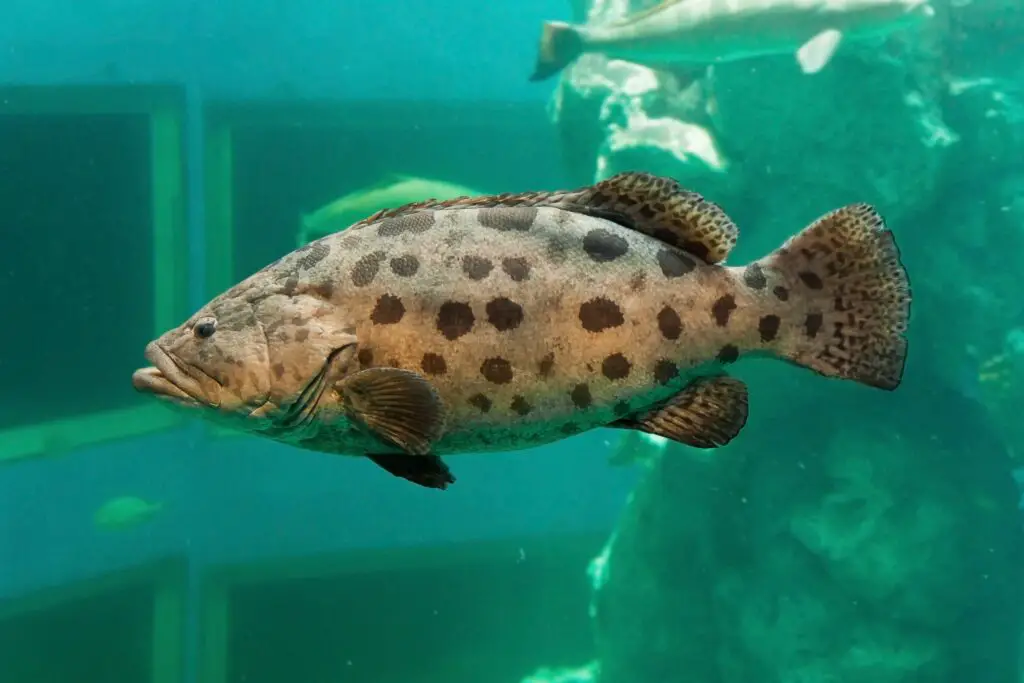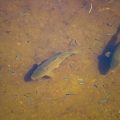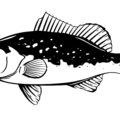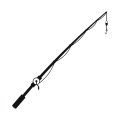Grouper is a large species name for a variety of fishes in the ocean. Perch is a freshwater fish that people commonly eat. Both fish are very widely distributed, as many different species are available in different parts of the world. However, there is a clear difference between the two fish and for starters, they both look very different.

The appearance
The first and most obvious difference between the grouper and the perch is their appearance. Grouper is usually associated with fish that are big, round, and gray. Their appearance is usually unassuming, with some marks like dots all over their body. Of course, some grouper species are very colorful and different, like peacock grouper. Some groupers have the ability to change their color.
Perch, on the other hand, is a small but often colorful freshwater fish with brightly colored fins. They have a long, round body shape, allowing them to swim better. Overall, they differ from groupers in shape, size, and appearance.
The size
Another difference between the perch and grouper is the size difference. The grouper, especially the Goliath grouper, can be as large as 10 feet in size and weigh up to 1,000 lbs. The jewfish is another large species of grouper. There are many species of grouper that are very large in size, like a hamour grouper.
There are three main species of perch. The biggest species is the European perch, which does not exceed 24 inches in size. Compared to grouper, these are tiny fish. If they meet, groupers would most likely eat perch fish, considering they are smaller in size. However, they would not meet because grouper are saltwater fish and perch are a freshwater fish.
The habitat
There are many species of grouper and most of them are found in saltwater. When it comes to their habitat, it varies from species to species; they can be found in deeper water or shallow water. This also depends on the season and the temperature of the water. These fish usually stay hidden until they locate their prey.
Perch species must always be found in freshwater to be considered true perch fish, but there are many other fish with the same name that are not members of the family. There are mainly three species of perch, and they are found in North America, Europe, South Africa, Kazakhstan, Uzbekistan, and China. They have also been introduced to Australia and New Zealand.
The diet
The diet of groupers varies from species to species, but most groupers have an omnivorous diet. They can survive on plants as well as other species in the ocean, but they prefer small fish and crustaceans in the water around them. However, if they cannot find protein, they can also survive on water plants such as algae. Grouper could also be beneficial and eat lionfish in an area.
On the other hand, perch fish is a carnivorous fish, and it only gets its nutrition through other small fish like juvenile fish and crustaceans like crabs, lobsters, and shrimp. The perch does not eat algae or other water plants. In fact, perch fish can also be cannibalistic and eat their own juvenile fish.
The nutrition
Both grouper and perch fish are edible. Groupers are rich in Selenium, Vitamin B6, and potassium compared to perch. Groupers also have less cholesterol and is high in fat. Moreover, grouper has more magnesium, sodium, Vitamin A, and many more nutrients and minerals.
When it comes to perch, it is higher in vitamin B12, manganese, copper, vitamin B3, vitamin B2, and zinc compared to grouper. The perch fish is richer in minerals and vitamins compared to grouper. It is also a more widely eaten fish. Calorie-wise, both fish have zero calories, so they are perfect for people trying to lose weight.
The taste
There are mainly two types of groupers sold for consumption: red and black grouper, which are eaten in most places. Grouper is not known for its outstanding flavor because the fish has a very mild taste, somewhere between the bass and halibut. Red grouper is said to have a sweeter flavor, so it is favored over black grouper. However, there is more meat in black grouper, especially the cheek part, which is a delicacy.
On the other hand, perch also has a mild texture with a firm and crumbly texture, but it can change depending on where the fish came from. Deep skinned ocean perch is said to have the most delicate flavor. All the species of perch fish are actually edible as well. The fish does not have a fishy smell, and even after being cooked, it does not lose its sweetness. Both of the fish are excellent at absorbing flavor.
Function of the fish
Groupers are usually caught as a recreational sport because most of the species of groupers are not eaten. There are almost 20 species of grouper that are on the endangered list, such as the Goliath grouper, and except for these, almost all groupers are caught for fun. Like many types of fish grouper may be farm-raised to be sold.
Whereas perch fish are caught for recreational sport, they are also caught to be sold as food. Perch has high demand in the culinary world and is included in many menus at restaurants. Moreover, the three main species of perch are not considered to be endangered either.
Conclusion
Grouper and perch are completely different fishes that vary in many ways, from their appearance to their habitat, size, nutritional value, as well as taste. Both perch and groupers play an important role in their ecosystem.











